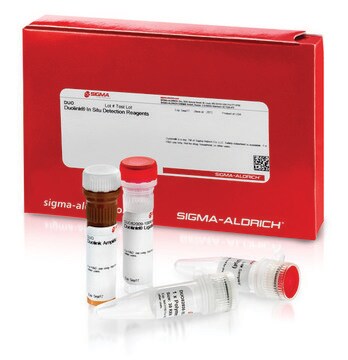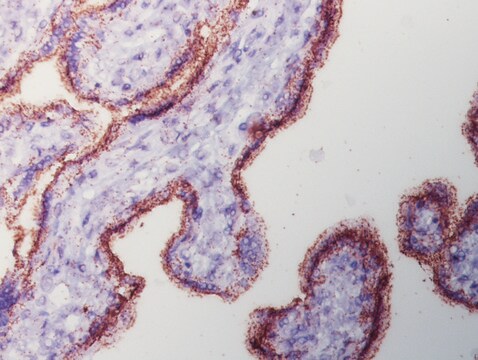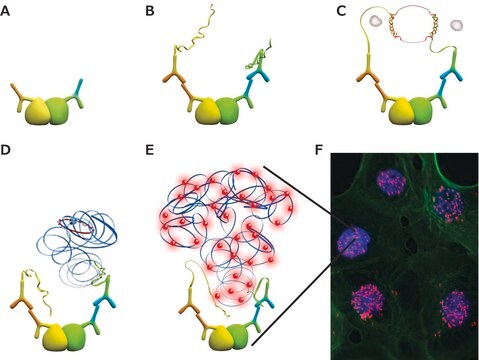DUO92014
Duolink® In Situ Detection Reagents Green
Sinónimos:
in situ Proximity Ligation Assay reagent, Protein Protein Interaction Assay reagent
About This Item
Productos recomendados
product line
Duolink®
Quality Level
technique(s)
proximity ligation assay: suitable
fluorescence
λex 495 nm; λem 527 nm (green) (FITC (Cyanine 2), Zeiss Filter set 38)
suitability
suitable for fluorescence
shipped in
dry ice
storage temp.
−20°C
General description
Specificity
Application
- vasopressin and gonadotropin-releasing hormone (GnRH) from frozen rat brain sections
- human embryonic kidney 293 cells (HEK)
- pituitary tissues
Features and Benefits
- No overexpression or genetic manipulation reNo overexpression or genetic manipulation required
- High specificity (fewer false positives)
- Single molecule sensitivity due to rolling circle amplification
- Relative quantification possible
- No special equipment needed
- Quicker and simpler than FRET
- Increased accuracy compared to co-IP
- Publication-ready results
Components
- 5x Ligation - Contains oligonucleotides that hybridize to the PLA probes and all components needed for ligation except the Ligase
- 1x Ligase (1 unit/μL)
- 1x Polymerase (10 units/μL)
- 5x Amplification Green - Contains all components needed for Rolling Circle Amplification (RCA) except the Polymerase. It also contains oligonucleotide probes labeled with a fluorophore that hybridize to the RCA product.
Not included in Detection kit:
Primary antibodies, PLA probes, wash buffers, mounting medium
Preparation Note
Storage and Stability
Other Notes
Visit our Duolink® PLA Resource Center for information on how to run a Duolink® experiment, applications, troubleshooting, and more.
Let us do the work for you, learn more about our Custom Service Program to accelerate your Duolink® projects
View full Duolink® product list
Legal Information
signalword
Danger
hcodes
pcodes
Hazard Classifications
Resp. Sens. 1
Storage Class
10 - Combustible liquids
Certificados de análisis (COA)
Busque Certificados de análisis (COA) introduciendo el número de lote del producto. Los números de lote se encuentran en la etiqueta del producto después de las palabras «Lot» o «Batch»
¿Ya tiene este producto?
Encuentre la documentación para los productos que ha comprado recientemente en la Biblioteca de documentos.
Los clientes también vieron
Artículos
Things to consider for preparation, setup and execution of the Duolink® assay protocol
Find Duolink references based on the type of method used, post translational modification detected, and research focus.
Support information including tips and tricks, frequently asked questions, and basic troubleshooting.
Contenido relacionado
Applications to detect, quantify and visualize protein-protein interactions, post-translational modifications and low expression protein detection using proximity ligation assay
Nuestro equipo de científicos tiene experiencia en todas las áreas de investigación: Ciencias de la vida, Ciencia de los materiales, Síntesis química, Cromatografía, Analítica y muchas otras.
Póngase en contacto con el Servicio técnico











